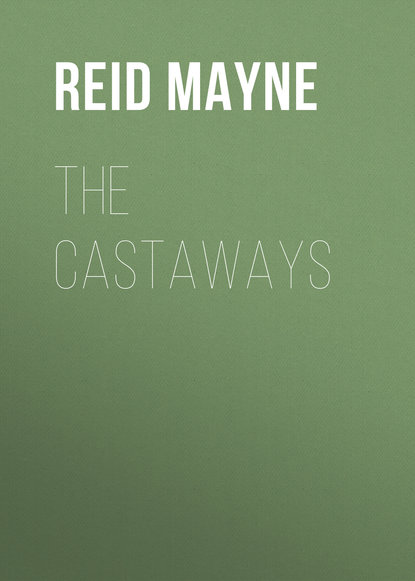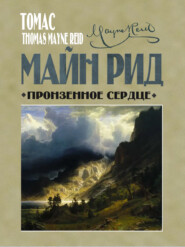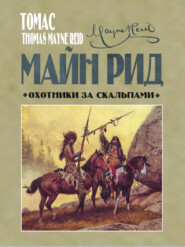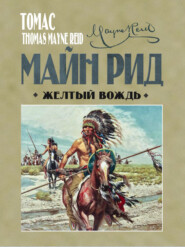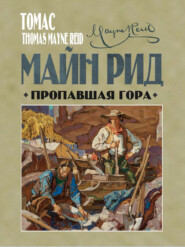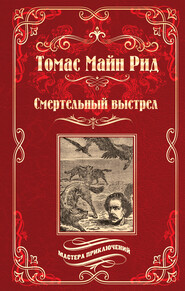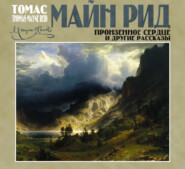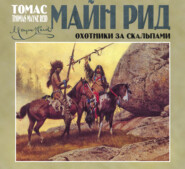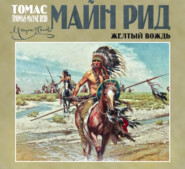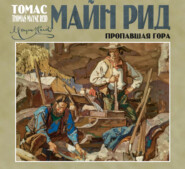По всем вопросам обращайтесь на: info@litportal.ru
(©) 2003-2024.
✖
The Castaways
Настройки чтения
Размер шрифта
Высота строк
Поля
But they still had some dread of danger from man – from those terrible enemies, the Dyaks, of whom Bornean travellers have told such ghastly tales.
It seemed, however, as if our adventurers were not destined to discover whether these tales were true or false, or in any way to realise them. The evil star that had hung over their heads while on the eastern side of the island, must have stayed there; and now on the west nothing of ill appeared likely to befall them.
For all this they did not trust to destiny, but took every precaution to shun an encounter with the savages, travelling only at such times as they were certain the “coast was clear;” and lying in concealment whenever they saw a sign of danger. Saloo, who could glide through the trees with the stealth and silence of a snake, always led the advance; and thus they progressed from hill to hill, and across the intervening valleys, still taking care that their faces should be turned westward.
At length, after many days of this cautious progress, they ascended a steep ridge, which, rising directly across their route, made it necessary for them to climb it.
It caused them several hours of toil; but they were well rewarded for the effort. On reaching its summit, and casting their glances beyond, they saw below, and at a little to the left, the strange old wooden-walled town of Bruni; while to the right, across a narrow arm of the sea, lay the island of Labuan, and on its conspicuous buildings waved the glorious old banner of Britannia.
Captain Redwood hailed it with almost as much joy as if it had been the flag of his native land.
He was not then in the mood to dwell on any distinction between them; but, flinging himself on his knees, with Henry on one side, and Helen upon the other – Murtagh and the Malay a few paces in the rear – he offered up a prayer of devout and earnest gratitude for their great deliverance to Him who is ever powerful to save, their Father and their God.
notes
1
The hammer-headed shark, in common language, is rightly designated one of the most hideous of marine animals. We mean hideous in outward appearance, for, of course, there is much both wonderful and beautiful in its internal organisation, and in the exquisite fitness of its structure for its peculiar part in the economy of nature. In the general outline of its body, which is something like that of a cylinder, it resembles the ordinary sharks; and its distinctive feature is its head, which, on either side, expands like a double-headed hammer. The eyes are very large, and placed at each extremity. It is found in the Mediterranean Sea, as well as in the Indian Ocean, and is noted for its fierceness and voracity.
2
The albatross Is the largest of the ocean-birds. Its wings, when extended, measuring fifteen feet, and its weight sometimes exceeding twenty to twenty-four pounds. The common albatross is the Diomedea exulans of naturalists. Its plumage, except a few of the wing feathers, is white; its long, hard beak, which Is very powerful, is of a pale yellow colour; and its short, webbed feet are flesh coloured. It is frequently met with in the Southern Ocean. The species mentioned in the text is the black-beaked albatross, which frequents the India waters. The albatross Is a formidable enemy to the sailor, for if one falls overboard, he will assuredly fall a victim to this powerful bird, unless rescued immediately by his comrades. Its cry has some resemblance to that of the pelican; but it will also, when excited, give rent to a noise not unlike the braying of an ass. The female makes a rude nest of earth on the sea-shore, and deposits therein her solitary egg, which is about four inches long, white, and spotted at the larger end.
3
We are unwilling to interrupt the course of our narrative by disquisitions on subjects of natural history, and, therefore, relegate to a note the following particulars about the dugong. This strange mammal belongs to a genus of the family Manatidae, or Herbivorous Cetacea. The species of which a member was discovered by our castaways, is the Halicore Indicus, or dugong of the Indian Archipelago; and, as we have said, is never found very far from land. Its dentition resembles, in some respects, that of the elephant; and from the structure of its digestible organs it can eat only vegetable food; that is, the algae, or weeds, growing on submarine rocks in shallow water. When it comes to the surface to breathe, it utters a peculiar cry, like the lowing of a cow. Its length, when full-grown, is said to be twenty feet, but few individuals seem to exceed twelve feet. In its general appearance it is very much like the manatee, or manatus, which haunts the mouths of the great South American rivers.
4
Strictly speaking, the Singapore oyster is a gigantic species of Clam, (Tridacna).
5
To these particulars we may add that the durion (Durio zibethinus) belongs to the natural family of Sterculiaceae, of the same sub-order (Bombaceae) as the silk-cotton tree. It grows to a great stature; its leaves are like those of the cherry, and its pale yellow flowers hang in large bunches. Each tree yields about two hundred fruit in a year. The fruit contains ten to twelve seeds, as large as pigeons’ eggs, and these, when roasted, are as good as, and taste very much like, roasted chestnuts.
6
As many as one hundred and twenty.
7
The Romans began their noonday meal with eggs, and ended with a dessert; ab ovo ad malum.
It seemed, however, as if our adventurers were not destined to discover whether these tales were true or false, or in any way to realise them. The evil star that had hung over their heads while on the eastern side of the island, must have stayed there; and now on the west nothing of ill appeared likely to befall them.
For all this they did not trust to destiny, but took every precaution to shun an encounter with the savages, travelling only at such times as they were certain the “coast was clear;” and lying in concealment whenever they saw a sign of danger. Saloo, who could glide through the trees with the stealth and silence of a snake, always led the advance; and thus they progressed from hill to hill, and across the intervening valleys, still taking care that their faces should be turned westward.
At length, after many days of this cautious progress, they ascended a steep ridge, which, rising directly across their route, made it necessary for them to climb it.
It caused them several hours of toil; but they were well rewarded for the effort. On reaching its summit, and casting their glances beyond, they saw below, and at a little to the left, the strange old wooden-walled town of Bruni; while to the right, across a narrow arm of the sea, lay the island of Labuan, and on its conspicuous buildings waved the glorious old banner of Britannia.
Captain Redwood hailed it with almost as much joy as if it had been the flag of his native land.
He was not then in the mood to dwell on any distinction between them; but, flinging himself on his knees, with Henry on one side, and Helen upon the other – Murtagh and the Malay a few paces in the rear – he offered up a prayer of devout and earnest gratitude for their great deliverance to Him who is ever powerful to save, their Father and their God.
notes
1
The hammer-headed shark, in common language, is rightly designated one of the most hideous of marine animals. We mean hideous in outward appearance, for, of course, there is much both wonderful and beautiful in its internal organisation, and in the exquisite fitness of its structure for its peculiar part in the economy of nature. In the general outline of its body, which is something like that of a cylinder, it resembles the ordinary sharks; and its distinctive feature is its head, which, on either side, expands like a double-headed hammer. The eyes are very large, and placed at each extremity. It is found in the Mediterranean Sea, as well as in the Indian Ocean, and is noted for its fierceness and voracity.
2
The albatross Is the largest of the ocean-birds. Its wings, when extended, measuring fifteen feet, and its weight sometimes exceeding twenty to twenty-four pounds. The common albatross is the Diomedea exulans of naturalists. Its plumage, except a few of the wing feathers, is white; its long, hard beak, which Is very powerful, is of a pale yellow colour; and its short, webbed feet are flesh coloured. It is frequently met with in the Southern Ocean. The species mentioned in the text is the black-beaked albatross, which frequents the India waters. The albatross Is a formidable enemy to the sailor, for if one falls overboard, he will assuredly fall a victim to this powerful bird, unless rescued immediately by his comrades. Its cry has some resemblance to that of the pelican; but it will also, when excited, give rent to a noise not unlike the braying of an ass. The female makes a rude nest of earth on the sea-shore, and deposits therein her solitary egg, which is about four inches long, white, and spotted at the larger end.
3
We are unwilling to interrupt the course of our narrative by disquisitions on subjects of natural history, and, therefore, relegate to a note the following particulars about the dugong. This strange mammal belongs to a genus of the family Manatidae, or Herbivorous Cetacea. The species of which a member was discovered by our castaways, is the Halicore Indicus, or dugong of the Indian Archipelago; and, as we have said, is never found very far from land. Its dentition resembles, in some respects, that of the elephant; and from the structure of its digestible organs it can eat only vegetable food; that is, the algae, or weeds, growing on submarine rocks in shallow water. When it comes to the surface to breathe, it utters a peculiar cry, like the lowing of a cow. Its length, when full-grown, is said to be twenty feet, but few individuals seem to exceed twelve feet. In its general appearance it is very much like the manatee, or manatus, which haunts the mouths of the great South American rivers.
4
Strictly speaking, the Singapore oyster is a gigantic species of Clam, (Tridacna).
5
To these particulars we may add that the durion (Durio zibethinus) belongs to the natural family of Sterculiaceae, of the same sub-order (Bombaceae) as the silk-cotton tree. It grows to a great stature; its leaves are like those of the cherry, and its pale yellow flowers hang in large bunches. Each tree yields about two hundred fruit in a year. The fruit contains ten to twelve seeds, as large as pigeons’ eggs, and these, when roasted, are as good as, and taste very much like, roasted chestnuts.
6
As many as one hundred and twenty.
7
The Romans began their noonday meal with eggs, and ended with a dessert; ab ovo ad malum.





